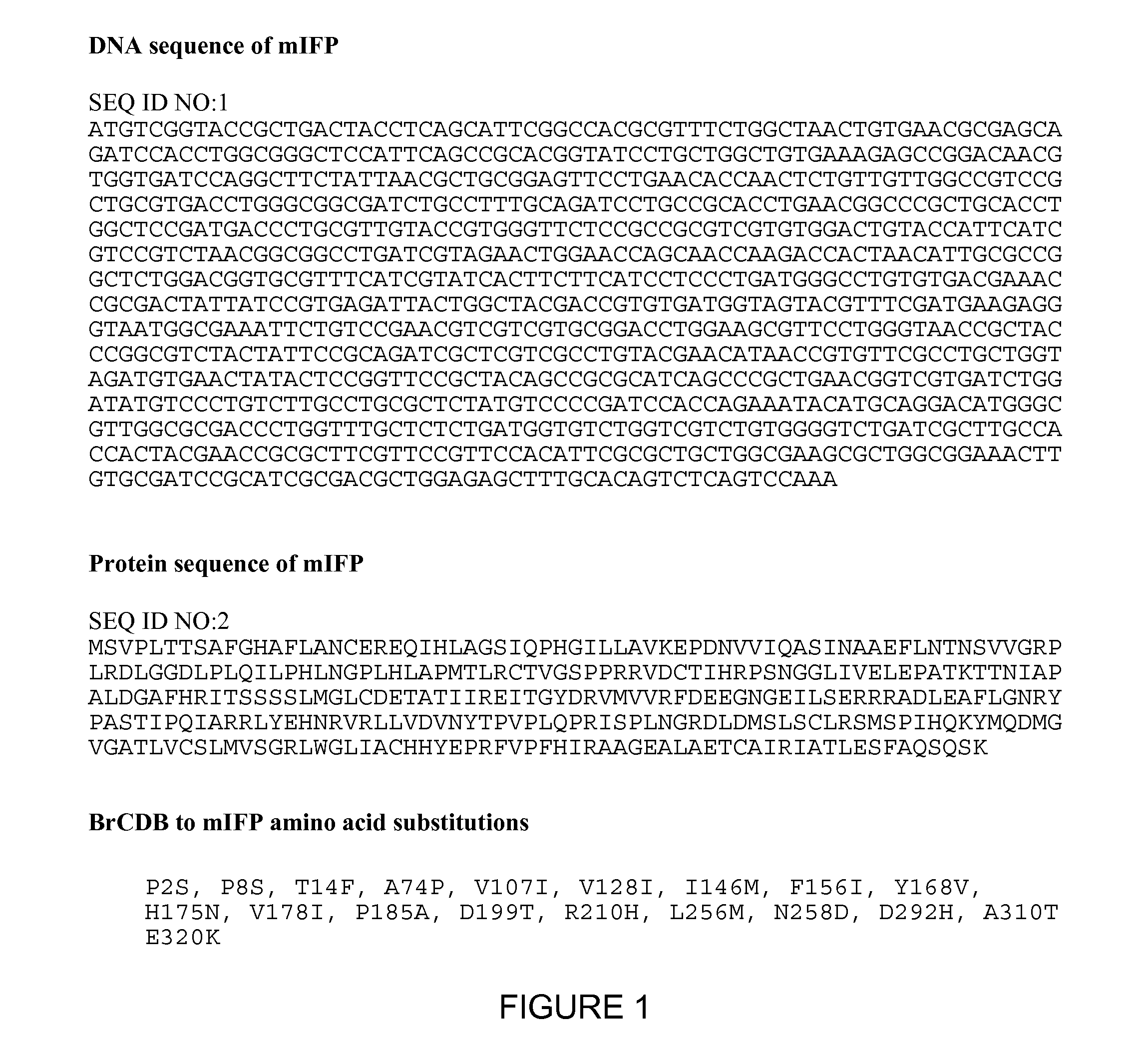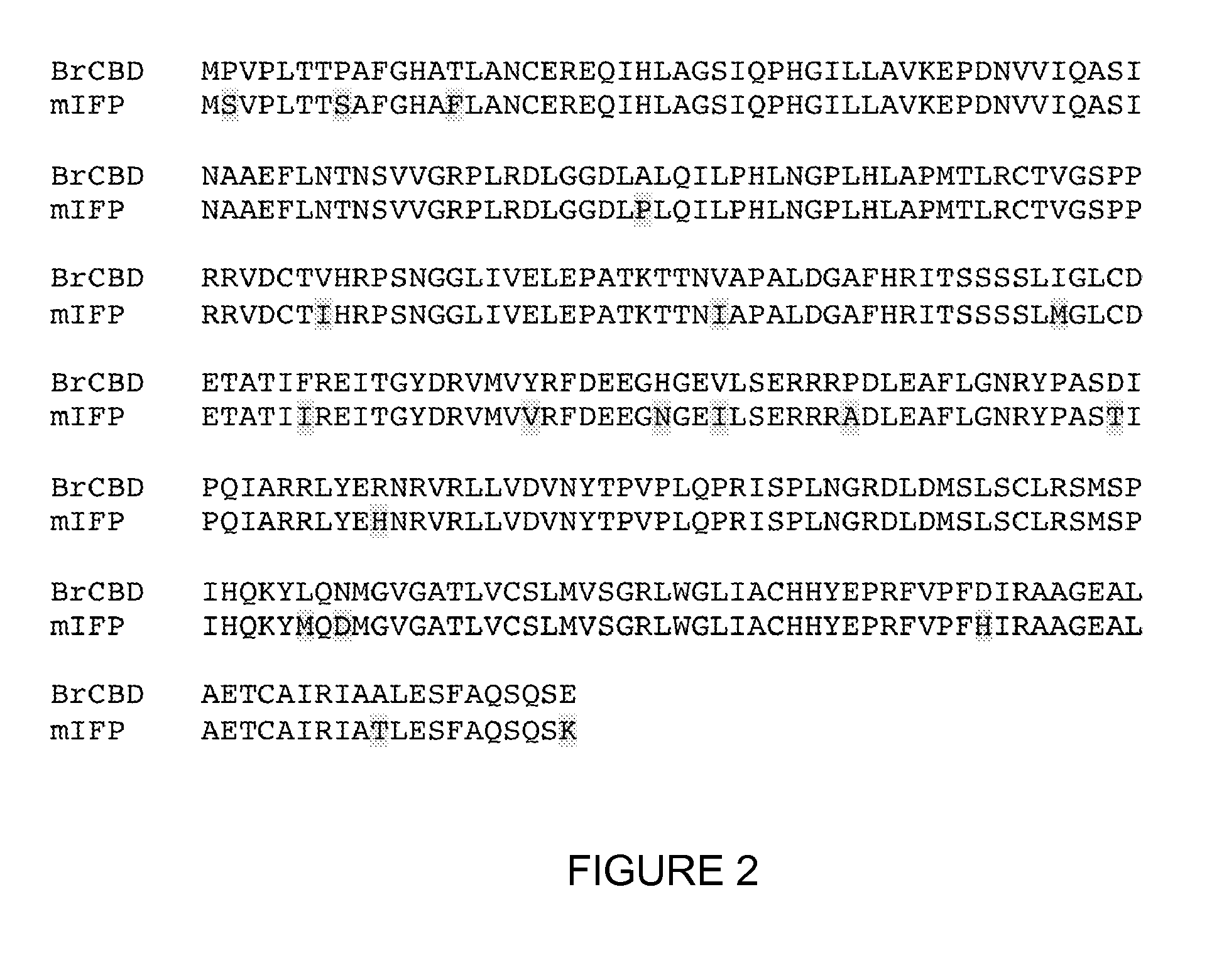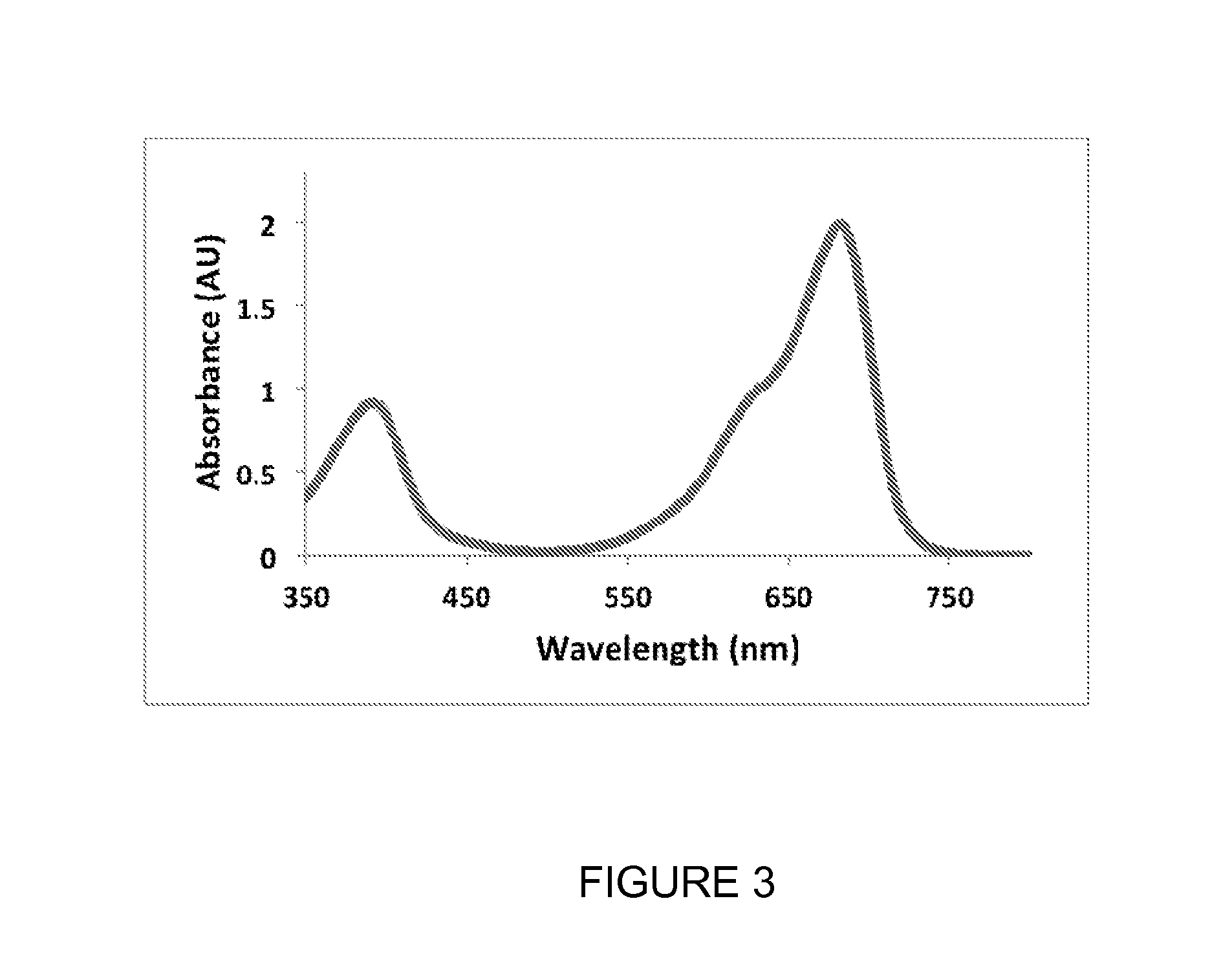Monomeric and bright infrared fluorescent proteins
a fluorescent protein and infrared technology, applied in the field of infrared fluorescent proteins, can solve the problems of limited use, poor penetration of excitation light, and limitations to the use of fluorescent proteins,
- Summary
- Abstract
- Description
- Claims
- Application Information
AI Technical Summary
Benefits of technology
Problems solved by technology
Method used
Image
Examples
example 1
Novel Truncation Mutant of a Bradyrhizobium sp. ORS278 Phytochrome
[0318]mIFP is a novel truncation mutant of the phytochrome BrBphP from the bacterium Bradyrhizobium sp. ORS278 (Giraud et al., Nature 417:202-205 (2002)). mIFP is monomeric, and contains 320 amino acids starting from the first N-terminal amino acid from BrBphP. mIFP includes 19 mutations introduced through directed evolution. The 19 amino acid substitutions of mIFP are P2S, P8S, T14F, A74P, V107I, V128I, I146M, F156I, Y168V, H175N, V178I, P185A, D199T, R210H, L256M, N258D, D292H, A310T, E320K.
[0319]When expressed in either bacteria or mammalian cells, these mutant phytochromes spontaneously incorporate biliverdin, a ubiquitous intermediate in heme catabolism, and become fluorescent. The maximal absorbance wavelength of mIFP is 683 nm (FIG. 3). The maximal excitation and emission wavelengths are 683 nm and 704 nm, respectively (FIG. 4). mIFP shows approximately a ten-fold increase in brightness compared to IFP1.4. Gel ...
example 2
Additional Truncation Mutants
[0320]Additional truncation mutants were developed from BrBphP. The mutations are relative to wild-type BrCBD, which is truncated from full length BrBphP.
[0321]BrIFPv1 includes a D199M substitution. The amino acid sequence of BrIFPv1 is provided as SEQ ID NO:3, and the nucleotide sequence of BrIFPv1 is provided as SEQ ID NO:4.
[0322]BrIFPv2 includes the following substitutions: A74P, V107I, V128I, I146M, P185A, M199T, R210H, L256M, N258D, D292H, E320K. The amino acid sequence of BrIFPv2 is provided as SEQ ID NO:5, and the nucleotide sequence of BrIFPv2 is provided as SEQ ID NO:6.
[0323]BrIFPv3 includes the following substitutions: A74P, V107I, V128I, I146M, P185A, M199T, R210H, L256M, N258D, D292H, E320K, T14F, F156I, H175N, and A310T. The amino acid sequence of BrIFPv3 is provided as SEQ ID NO:7, and the nucleotide sequence of BrIFPv3 is provided as SEQ ID NO:8.
example 3
Mammalian Expression of mIFP Engineered from a Bacterial Phytochrome
[0324]mIFP is a genetically encoded tag for cellular and protein imaging. FIG. 6 shows mIFP as a genetically encoded tag for cellular and protein imaging. mIFP was expressed in a HeLa cell (FIG. 6, left panel), which co-expresses with EGFP (FIG. 6, right panel).
[0325]Because mIFP is monomeric, mIFP can be used as a protein fusion tag with no or little perturbation of the protein of interest. mIFP was fused to H2B, and localized to the nucleus (FIG. 7, left panel). In contrast, the same cell shows EGFP localization to both the cytosol and nucleus (FIG. 7, right panel). mIFP was also fused to LifeAct, which localized to F-acting filaments in a HeLa cell (FIG. 8).
PUM
| Property | Measurement | Unit |
|---|---|---|
| Temperature | aaaaa | aaaaa |
| Fraction | aaaaa | aaaaa |
| Fraction | aaaaa | aaaaa |
Abstract
Description
Claims
Application Information
 Login to View More
Login to View More - R&D
- Intellectual Property
- Life Sciences
- Materials
- Tech Scout
- Unparalleled Data Quality
- Higher Quality Content
- 60% Fewer Hallucinations
Browse by: Latest US Patents, China's latest patents, Technical Efficacy Thesaurus, Application Domain, Technology Topic, Popular Technical Reports.
© 2025 PatSnap. All rights reserved.Legal|Privacy policy|Modern Slavery Act Transparency Statement|Sitemap|About US| Contact US: help@patsnap.com



